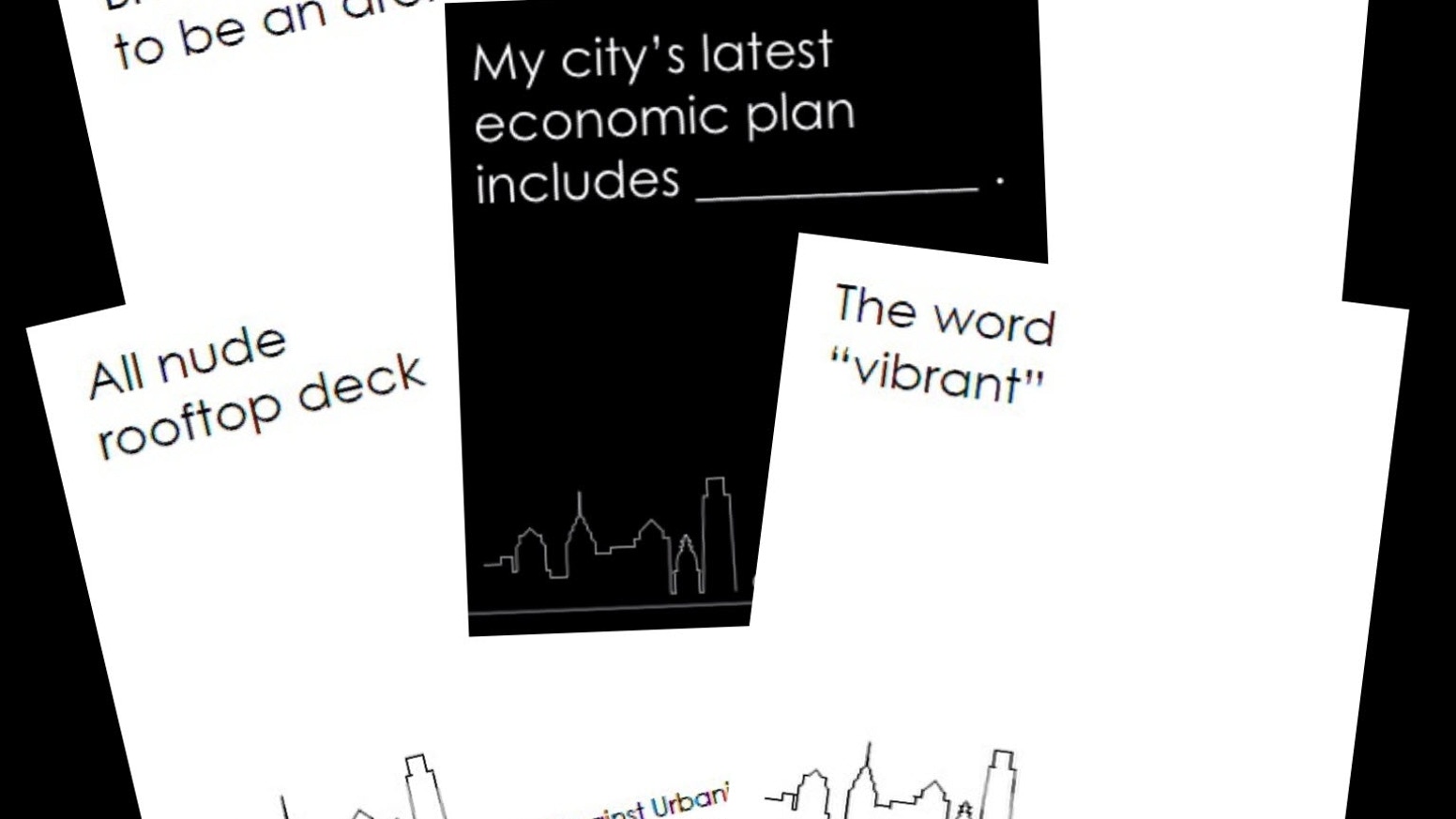The Card Game for Horrible Places: A Conversation with Lisa Nisenson, Co-Creator of Cards Against Urbanity
Issue 2: Game

Naturally, as a magazine, we are drawn to cities; it’s in our very name. So when we discovered the game Cards Against Urbanity, it was a no brainer that we had to play—it’s free to print, after all. While there is a familiar playfulness to the game (especially if you have played Cards Against Humanity), it has a uniquely disquieting tone, as it calls one’s attention to just how in jeopardy the sustainability of our cities are. This is done with a pinch of black comedy and makes for both a fun and unsettling play.
Intrigued by the concept and tone of the game, we reached out to Lisa Nisenson, an urban planner and co-creator of Cards Against Urbanity, to ask her a few questions about city planning, what inspired her to collaborate in the creation of the game, and her thoughts on speculation in regards to urban innovation.
When we asked what drew her to the field of city design and planning, she mentioned a concern that has passed through every city dweller’s mind when confronting change.
Nisenson: I got started as a civic activist in Arlington, Virginia. I lived two blocks from a Metro station, and a Home Depot wanted to plop a store next to the station. I thought, “Wow—that’s a waste of a Metro station.”
And that early analysis led Nisenson into a long, accomplished career in planning and policy-making.
Nisenson now runs GreaterPlaces, an urban planning tech startup, and still has a spark of the critical activist in her. Why else would she have created a game that sports the tagline “the card game for horrible places”?
Nisenson: The idea for a city-themed Cards Against Humanity happened at a late night card game during a conference. We were all having a really shitty summer and needed something fun to do.
Like Cards Against Humanity, Cards Against Urbanity embodies tongue-in-cheek humor. But Cards Against Urbanity isn’t just a game to help ease frustrations on city life. Being able to plug and play concepts and themes allows one to actively think about the city they live in and how they might want to change it, for the better. And Nisenson agrees.
Nisenson: The card game lovingly pokes fun at a lot of the wild cards that come our way in the public process or in working with real estate developers.
And so, ultimately, gamifying planning can actually be beneficial to the process, which Nisenson points out.
Nisenson: First, most civic outreach is really boring and technical. Gamifying planning draws people in and, in some cases, helps takes the edge off of difficult conversations that occur when different groups of people have different objectives for a planning project or a policy change.
While playing, we also realized how the game worked in speculation with cards like “innovation anything,” “cell towers disguised as trees,” and “rats with wings.” City planning and design is in itself a very speculative exercise.
Nisenson: Planning, by its nature, is about the future. And the future, by its nature, contains unknowns. So yes–any planning is speculative. This is particularly relevant as we experience rapid changes in technology, demographics, economic systems, and climate change. The role of good planning is getting a handle on trends and drivers of change, figuring out what is possible and what is probable. From there, a community can look at various things under their control (funding, policy, best practices) that will help harness the benefits of change while limiting negative risks. Ideally, we can pick from best practices that deliver multiple benefits. That way, you still build great places even if some aspects of the future don’t pan out.
And when thinking about major changes in technology or the environment, such as with climate change, Nisenson mentioned her work in scenario planning. Scenario planning is a way of creating long-term strategic plans in the context of great unknowns. Nisenson adds that such planning links back to games.
Nisenson: Scenario planning has its roots in war games that are charted out in the military to assess possible enemy moves.
While Cards Against Urbanity may not be the drinking game you want to break out for a raucous night with friends, it may indiscreetly be the game to provoke active thinking from city planners and citizens alike.

Lisa Nisenson
Lisa has conducted research and written seminal guides on water resources, transit-orientation, innovation, civic engagement, and technology. Currently, her work focuses on adaptive planning for technology, in particular smart city and transportation technology (including planning for active + autonomous vehicles).




